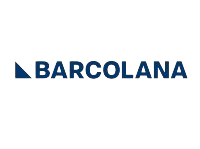- Home
- Broadcast Services
- Broadcast Systems
- Contents and Events
- Portfolio
- Production units
- News
- Contact us

« Back
Remote Production: the new frontier of live broadcasting
Remote Production is in fact, before being a series of technological choices, a new production philosophy, which exploits the immense networking nature of the internet to pursue a more cost-effective, environmentally-friendly, and a richer content production approach.
The television market is showing a strong viewer's’ interest to on-demand products because they can be handled whenever they want and are completely customizable. This trend is not found in sports, entertainment and political forum segments, where the "live" element is indispensable.
Remote Production: the technology that adapts to all production demands
Although there is an increase in advertising spending on live sports, there is also a general reduction in advertising margins: it is clear that a broadcaster can not have live sporting events 24 hours a day, so it is an easy guess to assume that there is a race to save money by those who produce live content. Internet and Remote Production are a solution to this crisis situation.
The benefits that this philosophy brings with it all arise from the ability to move less material and fewer people to the production site, requiring the finalization and control of the event directly from the headquarters of the broadcaster. In addition to the economic savings, due to less traveling, the technical staff that stays in the office is less likely to bump into travelling problems (such as jet lag, food sickness, fatigue due to complex setups, distance from families, etc.) and even the crew that continues to travel is subject to managing easier setups with lighter technology.
Remote Production: two different approaches to live broadcasting
There are two fundamental approaches to Remote Production, each of which have their own strengths, that Videe weights in each time to find the solution that best suits the type of production. We now present the pros and cons of both solutions.
Approach 1
The more traditional approach involves the transport of all signals directly to the broadcaster's headquarters. This method undoubtedly limits the number of variables to be controlled and maximizes the reaction time in respect to the images, but makes the communication with the production site more complicated and significantly increases the bandwidth required to operate the system.
Approach 2
The second approach involves the network transfer of a minimum number of audio and video signals and remote control of the equipment in order to create the final product onsite. This system uses a smaller bandwidth but with larger material transport (albeit still smaller than classical production) and needs a more integrated structure where there are multiple variables and must be instantly verifiable.
Videe is able to support the client on both of the above-mentioned philosophies: as well as every production we face, we believe in creating an ad-hoc workflow for our customers that meets their needs and is in line with the quality expectations of the final result. Videe, which has been in the industry for thirty years, has been able to understand the complex evolutions of the market, and offer Remote Production to clients with custom and personalized solutions to meet their demands and objectives.






































